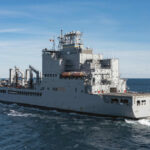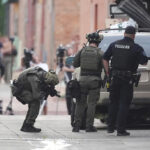The U.S. Coast Guard has opened a temporary, alternate channel for vessels involved in the clearing of debris at the site of the collapsed Francis Scott Key Bridge in Baltimore, part of a phased approach to opening the main channel leading to the vital port, officials said.
Quick Read
- The U.S. Coast Guard has established a temporary, alternate channel for debris-clearing vessels at the Francis Scott Key Bridge collapse site in Baltimore, as part of a strategy to gradually reopen the main channel to the critical port.
- Removal efforts for steel and concrete debris from the bridge’s collapse are ongoing, following a container ship’s collision with a support column, leading to the structure’s failure.
- The temporary channel is exclusively for use by vessels engaged in the cleanup, following the accident that is believed to have resulted in the deaths of four workers, whose recovery remains a priority in the salvage operations.
- The specified dimensions for the temporary channel include an 11-foot controlling depth, 264-foot horizontal clearance, and 96-foot vertical clearance, with the Coast Guard deploying buoys to mark the route.
- This initiative is seen as a crucial step towards restoring access to the Port of Baltimore, as stated by Capt. David O’Connell, the federal coordinator of the response efforts.
- President Joe Biden plans to visit the collapse site to review federal response activities and meet with state and local officials.
- The Small Business Administration has set up two centers to offer loans to businesses affected by the bridge collapse, aiming to mitigate the impact of the disruption on local commerce and supply chains.
- The bridge disaster occurred when the cargo ship Dali experienced a power outage, leading to an emergency situation that allowed for vehicular traffic to be halted but not the evacuation of eight bridge workers, resulting in two fatalities and four presumed deaths.
- Legal proceedings have been initiated by Synergy Marine Group and Grace Ocean Private Ltd., the managing and owning entities of the Dali, to limit their liability under U.S. maritime law, with a proposed cap of approximately $43.6 million.
- Discussions are underway on the reconstruction of the significant bridge, which served as a key infrastructure element around southeast Baltimore, with Congress expected to consider aid packages for those impacted by the port’s prolonged closure.
The Associated Press has the story:
Baltimore Bridge: A channel has opened for vessels clearing wreckage
Newslooks- BALTIMORE (AP) —
The U.S. Coast Guard has opened a temporary, alternate channel for vessels involved in the clearing of debris at the site of the collapsed Francis Scott Key Bridge in Baltimore, part of a phased approach to opening the main channel leading to the vital port, officials said.
Crews are undertaking the complicated work of removing steel and concrete at the site of the bridge’s deadly collapse into the Patapsco River after a container ship lost power and crashed into a supporting column. On Sunday, dive teams surveyed parts of the bridge and checked the ship, and workers in lifts used torches to cut above-water parts of the twisted steel superstructure.
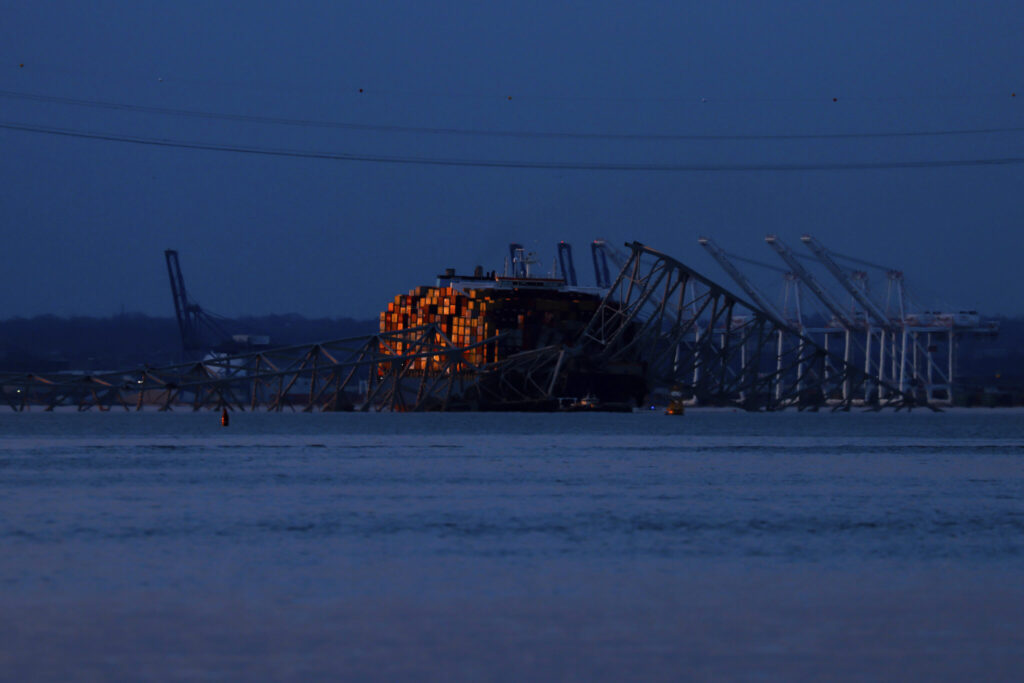
Officials said the temporary channel is open only to vessels that are helping with the cleanup effort. Authorities believe four workers plunged to their deaths in the collapse. Recovery of their bodies is a key part of the ongoing salvage operation.
Officials earlier said the channel would have a controlling depth of 11 feet (over 3 meters), a horizontal clearance of 264 feet (80 meters) and a vertical clearance of 96 feet (29 meters). A video released Sunday showed the Coast Guard dropping buoys in the water.
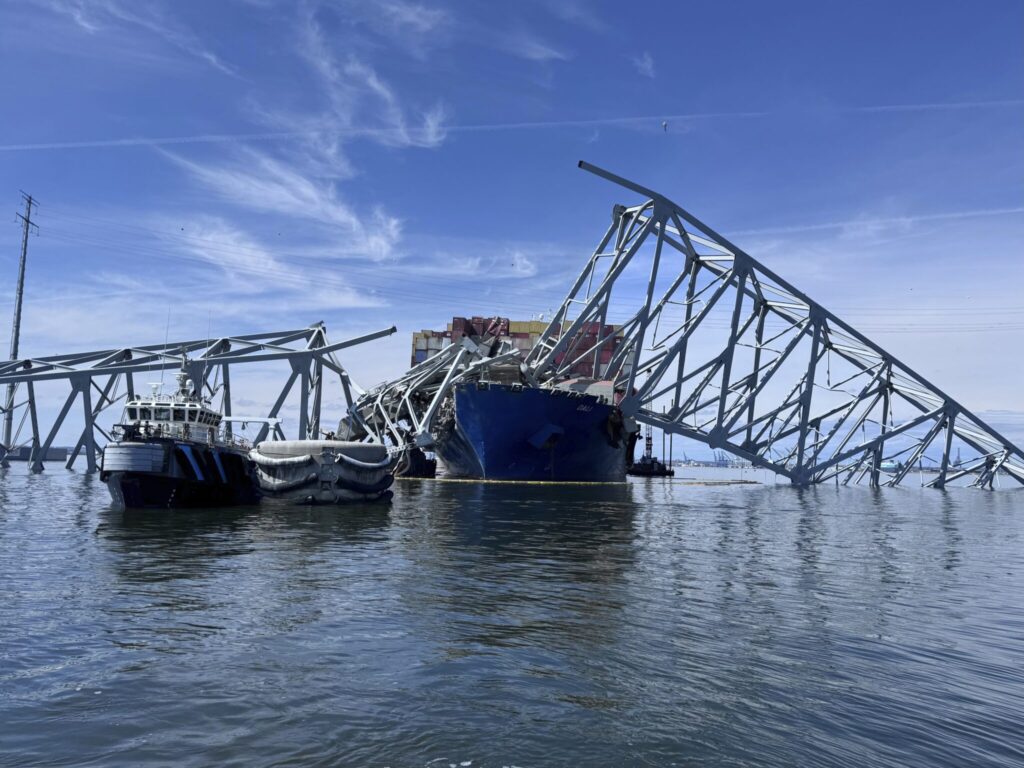
“This marks an important first step along the road to reopening the port of Baltimore,” Capt. David O’Connell, the federal on-scene coordinator of the response, said in a statement Monday. “By opening this alternate route, we will support the flow of marine traffic into Baltimore.”
President Joe Biden will visit the site Friday, White House press secretary Karine Jean-Pierre announced Monday afternoon. He will meet with state and local officials and get an “on-the-ground look” at federal response efforts, Jean-Pierre said.
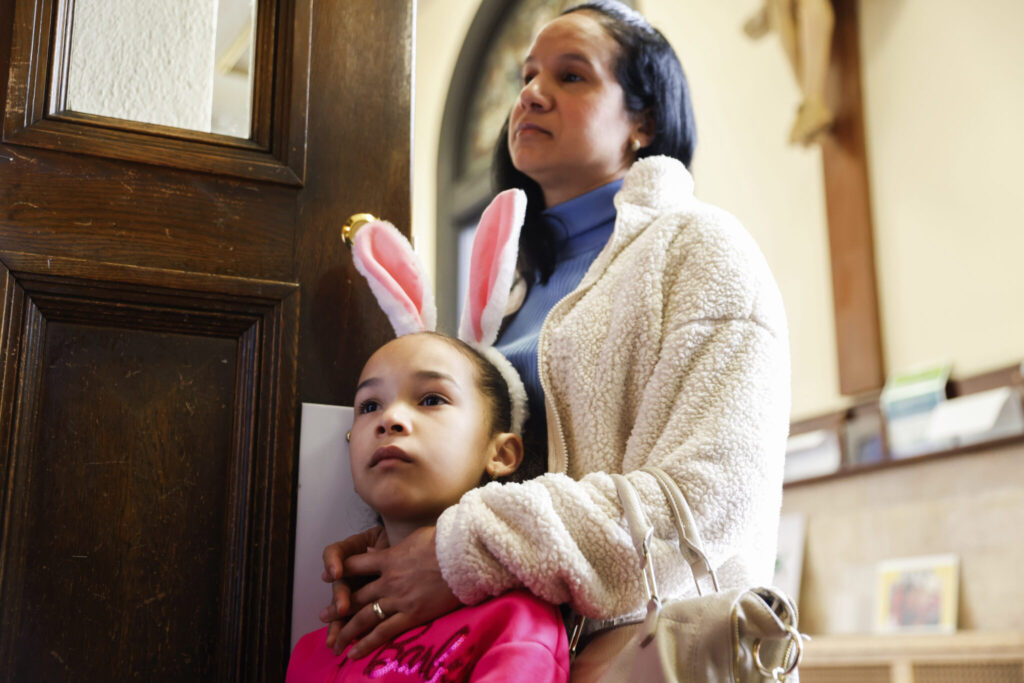
Also Monday, the Small Business Administration opened two centers in the area to help companies get loans to assist them with losses caused by the disruption of the bridge collapse. One of the centers is in Dundalk, a suburb of Baltimore on the northeast end of the bridge.
Yvette Jeffery, a spokesperson for the agency’s disaster recovery office, said affected businesses can receive loans for as much as $2 million. She said the effects could range from supply-chain challenges to decreased foot traffic in communities that depended heavily on the bridge.
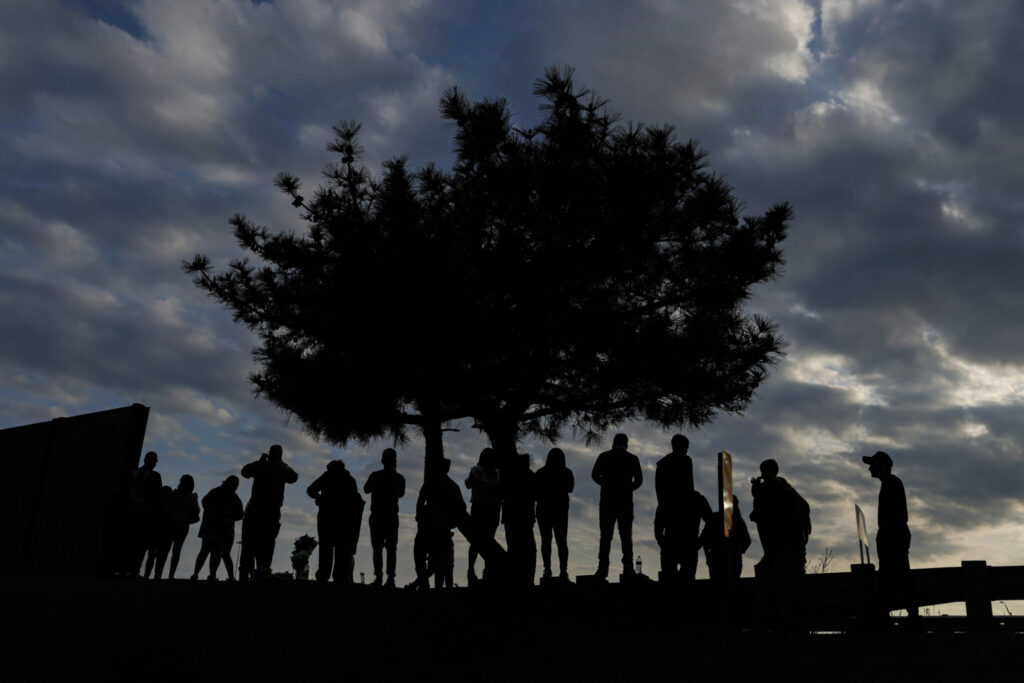
The bridge fell as the crew of the cargo ship Dali lost power and control on March 26. They called in a mayday, which allowed just enough time for police to stop vehicles from getting on the bridge, but not enough time to get a crew of eight workers off the structure.
Two workers survived, two bodies were found in a submerged pickup, and four more men are presumed dead. Weather conditions and the tangled debris underwater have made it too dangerous for divers to search for their bodies.
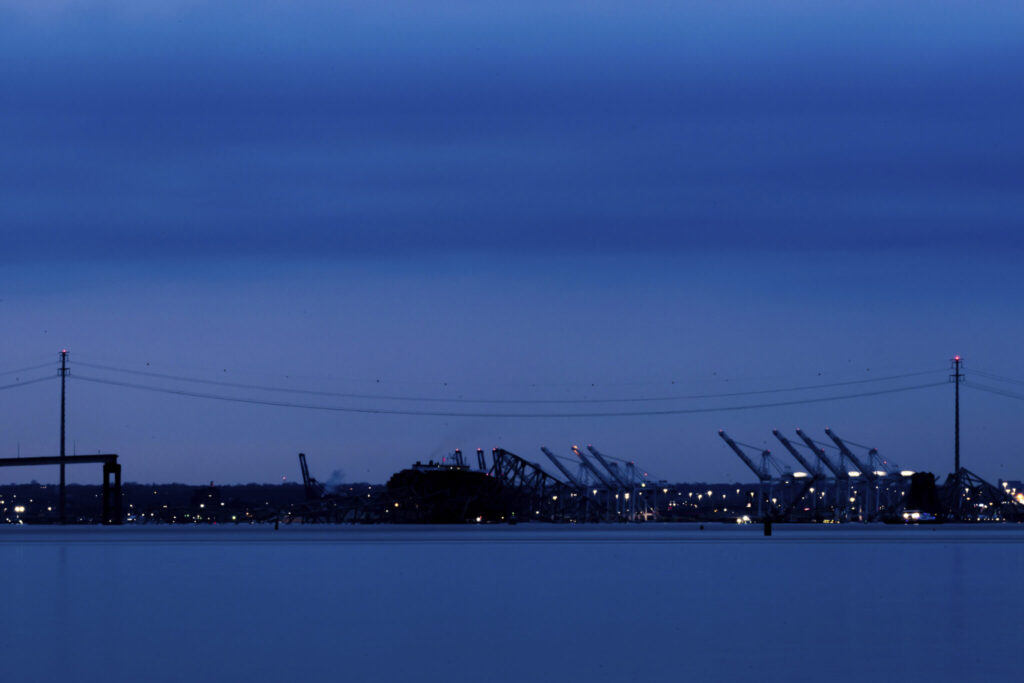
The Dali is managed by Synergy Marine Group and owned by Grace Ocean Private Ltd., both of Singapore. Danish shipping giant Maersk chartered the Dali, which was on its way out of port when it lost power.
Synergy and Grace Ocean filed a court petition Monday seeking to limit their legal liability. It is a routine but important procedure for cases litigated under U.S. maritime law. A federal court in Maryland will ultimately decide who is responsible and how much they owe.
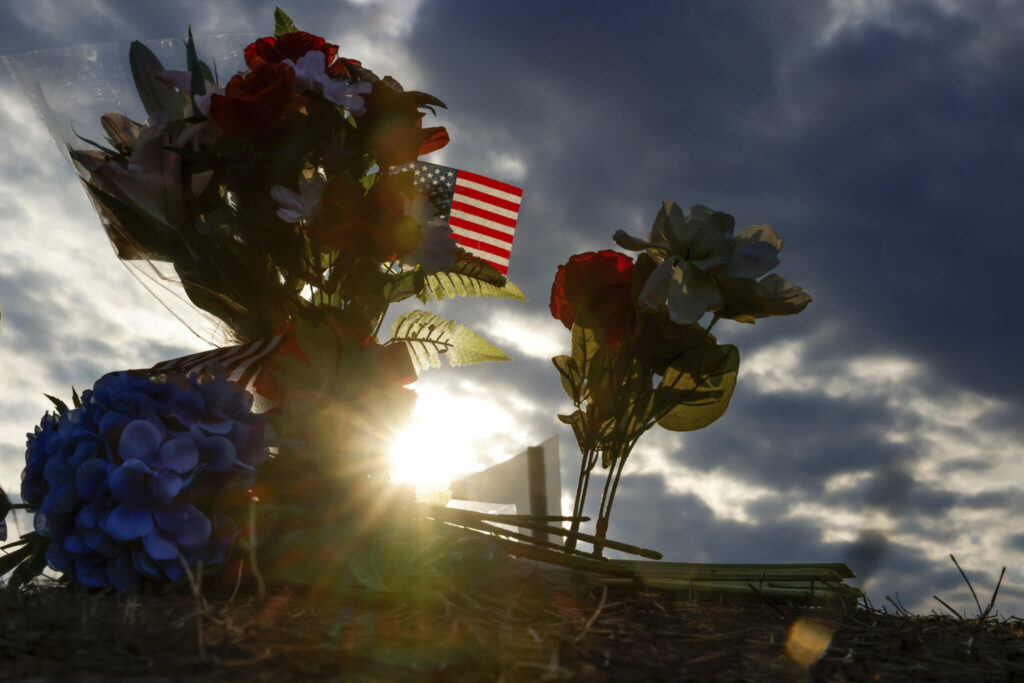
The filing seeks to cap the companies’ liability at roughly $43.6 million. It estimates that the vessel itself is valued at up to $90 million and was carrying freight worth over $1.1 million in income for the companies. The estimate also deducts two major expenses: at least $28 million in repairs and at least $19.5 million in salvage.
Along with clearing the shipping channel to reopen the port, officials are trying to determine how to rebuild the major bridge, which was completed in 1977. It carried Interstate 695 around southeast Baltimore and became a symbol of the city’s working-class roots and maritime culture.
Congress is expected to consider aid packages to help people who lose jobs or businesses because of the prolonged closure of the Port of Baltimore. The port handles more cars and farm equipment than any other U.S. facility.

